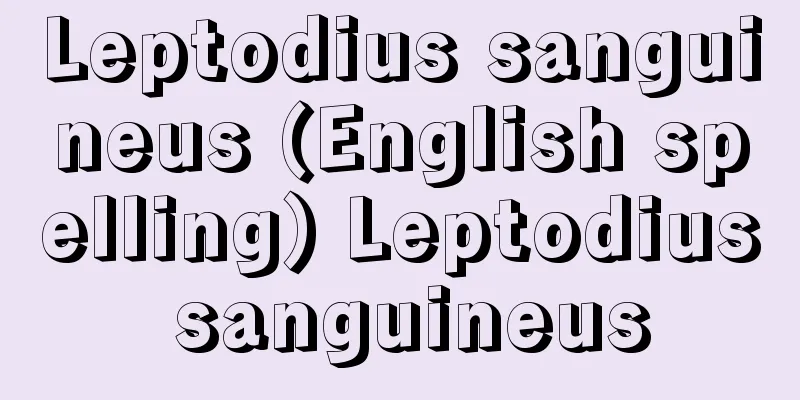Arahata Kanson

|
Socialist. Real name Katsuzo. Born in Yokohama on August 14, 1887. After graduating from high school, he worked as a boy at a foreign trading post and an apprentice worker at a naval shipyard while studying on his own. Resonating with the anti-war and socialist ideas of Kotoku Shusui and Sakai Toshihiko, he participated in the activities of the Heiminsha in 1904 (Meiji 37). The following year, in 1905, he set out on a peddling mission to promote socialism, and was deeply moved by the sight of Tanaka Shozo whom he met along the way. He learned in detail about the Yanaka Village issue, and based on this, he wrote his debut work, Yanaka Village Destruction History, at the age of 20 in 1907. In 1908, he was imprisoned for the Red Flag Incident. In the so-called "Winter Period" following the High Treason Incident of 1910, he helped out at the Uribunsha in Sakai, and in 1912 (Taisho 1), he published Modern Thought with Osugi Sakae and others, and worked to promote syndicalism. He then became involved in the study and practice of labor union movements, gradually shifting to a Marxist stance. He participated in the founding of the Socialist League in 1920 and the Japanese Communist Party in 1922, but in 1927 (Showa 2) he opposed Fukumotoism and refused to join the second Communist Party, becoming a member of the magazine Labor-Farmer, and thereafter playing an active role as a labor-farmer Marxist. He was arrested and imprisoned in the Popular Front Incident in 1937. After World War II, he became a central committee member of the Japan Socialist Party and was elected to the House of Representatives twice (1946-1948), but left the party in 1948 (Showa 23) and thereafter devoted himself to writing. He sympathized with the Russian Narodniks from an early stage, and after the war he wrote "The Dawn of the Russian Revolutionary Movement." He died on March 6, 1981. [Kenzo Kitagawa] "Autobiography of Kanson" (1965, Chikuma Shobo) " Collected Works of Arahata Kanson, 10 volumes (1976-1977, Heibonsha)" [Reference item] |Source: Shogakukan Encyclopedia Nipponica About Encyclopedia Nipponica Information | Legend |
|
社会主義者。本名勝三。明治20年8月14日横浜に生まれる。高等小学校卒業後、外国商館のボーイ、海軍造船工廠(こうしょう)の見習い職工をしながら独学。幸徳秋水、堺利彦(さかいとしひこ)らの反戦・社会主義思想に共鳴して1904年(明治37)平民社の活動に参加。翌1905年社会主義宣伝のための伝道行商に出発、途上で会った田中正造の姿に感激、谷中(やなか)村問題を詳しく知り、これをもとに1907年20歳のとき処女作『谷中村滅亡史』を著した。1908年赤旗事件で入獄。1910年の大逆事件後のいわゆる「冬の時代」には堺の売文社を手伝い、1912年(大正1)には大杉栄らと『近代思想』を発行、サンジカリズムの宣伝に努めた。その後、労働組合運動の研究と実践にかかわり、しだいにマルクス主義の立場に移っていった。1920年社会主義同盟の創立、1922年日本共産党の創立に参画したが、1927年(昭和2)には福本イズムに反対し第二次共産党への入党を拒否、雑誌『労農』の同人となり、以後労農派マルクス主義の立場で活躍。1937年の人民戦線事件で検挙され下獄。第二次世界大戦後は日本社会党中央委員となり、衆議院議員に2回当選(1946~1948)したが、1948年(昭和23)には脱党、以後文筆活動に力を注いだ。早くからロシアのナロードニキに共鳴し、戦後『ロシア革命運動の曙(あけぼの)』を著した。昭和56年3月6日死去。 [北河賢三] 『『寒村自伝』(1965・筑摩書房)』▽『『荒畑寒村著作集』全10巻(1976~1977・平凡社)』 [参照項目] |出典 小学館 日本大百科全書(ニッポニカ)日本大百科全書(ニッポニカ)について 情報 | 凡例 |
<<: Allahabad (English spelling)
>>: Alabaster - Arabaster (English spelling)
Recommend
Queen Charlotte Islands
An archipelago on the Pacific coast of Canada, par...
Yunnan musk - Unnan musk
… Tibetan musk is the best quality, and is known ...
Short-run cost, long-run cost
The most important concepts of time in economics a...
Synthetic natural gas (English spelling)
Abbreviated as SNG. Also called substitute natural...
Mibu Kyogen
Nembutsu Kyogen is a form of kyogen performed at ...
Eudyptes chrysolophus (English spelling)
… [Hiroyuki Morioka]. … *Some of the terminology ...
Arbat Street - Albert Dori
Ulitsa Arbat / Улица Арбат is a street located in ...
Acute Radiation Syndrome - Acute Radiation Syndrome
A type of radiation damage in which symptoms appea...
SRC method - SRC method
...The technologies are broadly divided into dire...
Yoshigo Shell Mound
This shell mound is from the late Jomon period an...
Popular novel - tsuuzokushosetsu
It refers to books that are highly entertaining a...
Albert I
1875‐1934 King of Belgium. Reigned 1909-34. Real n...
Accident insurance - shogaihoken
This is insurance that pays benefits when the ins...
Hanatora no O - Hanatora no O
A perennial plant of the Lamiaceae family (APG cl...
keep
…The Norman knights' castles were built in a ...









